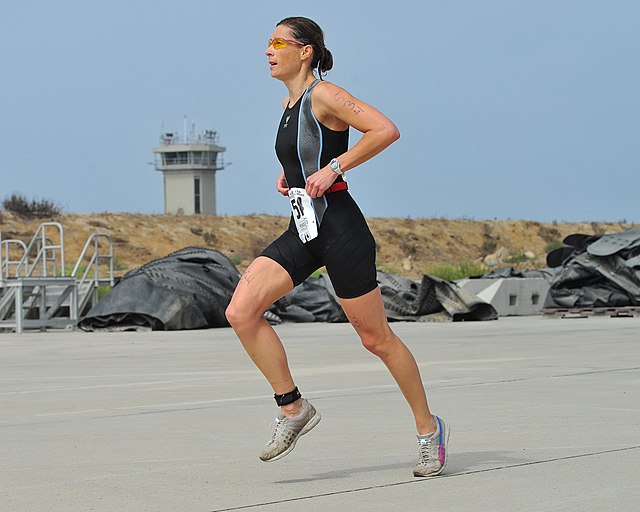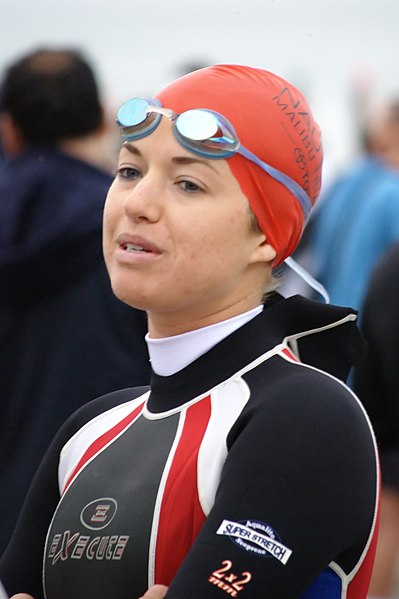A triathlon is an endurance multisport race consisting of swimming, cycling, and running over various distances. Triathletes compete for fastest overall completion time, racing each segment sequentially with the time transitioning between the disciplines included. The word is of Greek origin, from τρεῖς or treis (three) and ἆθλος or athlos (competition).
The three typical components of triathlon: swimming, cycling, and running.
1922 Course des trois sports
Competition and pressure for faster times have led to the development of specialized triathlon clothing that is adequate for both swimming and cycling, such as speedsuits.
Reality TV's "Survivor" contestant, Parvati Shallow, dressed to compete in the 2008 Nautica Triathlon Malibu Individual Open for females.
World Triathlon Championship Series
The World Triathlon Championship Series is World Triathlon's annual series of triathlon events used to crown an annual world champion since 2008. There are multiple rounds of competitions culminating in a Grand Final race. Athletes compete head-to-head for points in these races that will determine the overall World Triathlon champion. The elite championship races are held, with one exception, over two distances, the standard or 'Olympic' distance and the sprint distance. The ITU world champion between 1989 and 2008 had been decided in a single annual championship race.
Australian Emma Snowsill captured the title on 3 different occasions.





